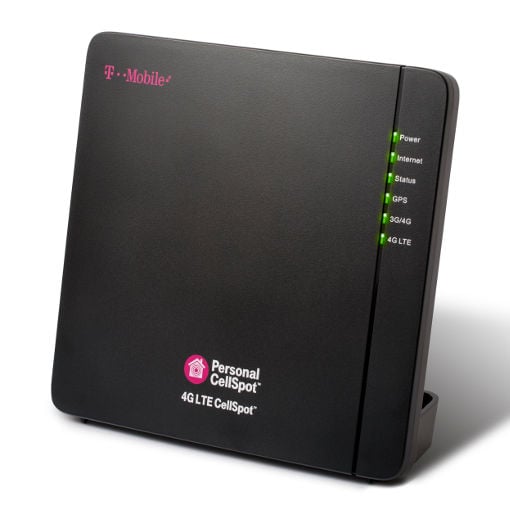 Do you live in a cell signal dead zone? Is your office just as dead? If you’re a T-Mobile customer, the 4G LTE CellSpot can make those places come alive with nonstop, full-bar T-Mobile LTE signals even if you don't have cellular coverage in your area.
Do you live in a cell signal dead zone? Is your office just as dead? If you’re a T-Mobile customer, the 4G LTE CellSpot can make those places come alive with nonstop, full-bar T-Mobile LTE signals even if you don't have cellular coverage in your area.
The CellSpot acts as a miniature LTE tower for your home or office. The 8.5-inch device uses femtocell (small cell) technology to connect to your Internet router and place an area about 3,000 square feet under the umbrella of a full-bar LTE signal.
You don’t need to log in with usernames or passwords once the CellSpot has been set up. Your devices will connect automatically, just as they would to any T-Mobile cell tower. This also means that other T-Mobile customers can avail themselves of CellSpot coverage as long as they’re within range.
Up to 16 devices can make calls simultaneously as long as the devices (3G-, 4G- or LTE-capable) are compatible with the T-Mobile network, making the CellSpot great for small businesses.
Postpaid T-Mobile Simple Choice subscribers can get one CellSpot for free for your home or business with a $25 refundable deposit. Drop in at any T-Mobile store to request your CellSpot or have a unit shipped to you.
T-Mobile began offering a CellSpot Wi-Fi router last year that lets callers call and text over a Wi-Fi connection in areas not reached by T-Mobile’s cellular coverage. But the newer LTE CellSpot is definitely faster and more reliable than the Wi-Fi CellSpot. It also supports new network technologies such as Voice over LTE (VoLTE), HD Calling, video calling and advanced messaging.
T-Mobile isn’t the only provider to offer devices like the CellSpot. AT&T’s MicroCell is similar in principle, but you have to buy the device from third-party retailers (including Amazon), register the device with AT&T and get your phone activated so you can use it with the MicroCell. Sprint offers the AIRAVE, which also provides restricted access to approved phone numbers. Verizon’s Samsung Network Extender has similar functions and also allows limited access.
Suffering cell signal woes at home? Consult our advice on how to get better cell phone reception at home. Also visit our page about what Wi-Fi Calling is and why you should be using it.
[Image credit: T-Mobile]















